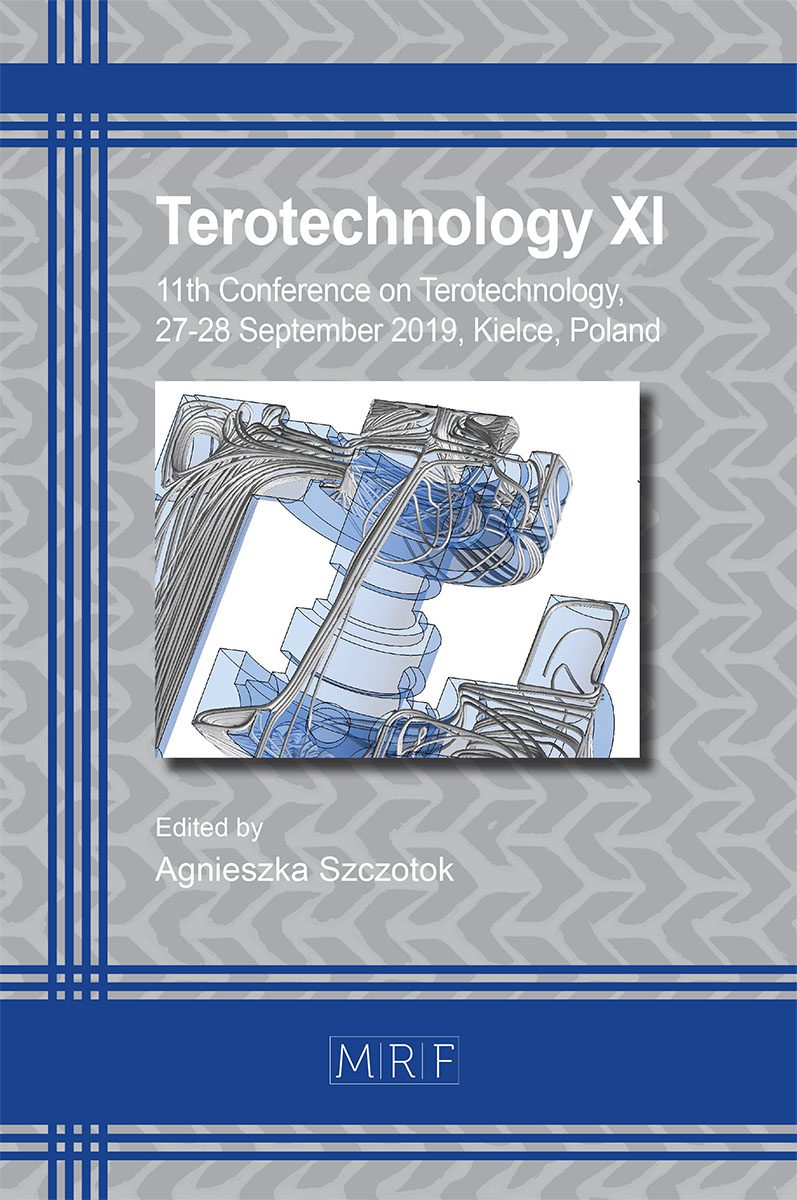Laser Welding of Girth Joint – Numerical Simulation and Experimental Investigation
DANIELEWSKI Hubert, SKRZYPCZYK Andrzej, PAŁA Tadeusz, FURMAŃCZYK Piotr, TOFIL Szymon and WITKOWSKI Grzegorz
download PDFAbstract. Laser welding of similar girth joints is a commonly used method of permanent joining process. Parameters can be easily analytically estimated. Nevertheless, performing more advanced types of joints, such as girth joints, is more complex. Estimating process parameters using numerical simulation can be performed. Assuming laser beam energy absorption in material heat expansion isotherms of a melting point can be calculated. Performing girth joint requires adequate angle process head orientation and welding parameters. Laser welding process is an unconventional method and does not require any additional material. The arc welding of a flange joint requires a multi run welding, and a single run welding can be performed using a laser beam. The article presents the possibility of numerical modeling laser welding of girth joints using the SimufactWelding software. Thermal and thermo-mechanical analysis were performed. The parameters estimated in the laser welding simulation are the following: output power, feed rate, efficiency and intensity distribution – Gaussian parameter. Low carbon construction steel S235JR is the material used for the process simulation. Double cylindrical simulated laser beam absorption and keyhole effect are the heat source used for the laser welding simulation. Thermal and thermo-mechanical properties such as fusion zone, distortion, displacement and hardness distribution were calculated [1, 2]. Experimental laser welding of lap joints was performed based on estimating parameters. Welding process using 6 kW CO2 laser with simulated parameters in order to compare numerical and experimental results was performed.
Keywords
Laser Welding, Numerical Simulation, Girth Joints, Circumferential Trial Joint
Published online , 6 pages
Copyright © 2020 by the author(s)
Published under license by Materials Research Forum LLC., Millersville PA, USA
Citation: DANIELEWSKI Hubert, SKRZYPCZYK Andrzej, PAŁA Tadeusz, FURMAŃCZYK Piotr, TOFIL Szymon and WITKOWSKI Grzegorz, Laser Welding of Girth Joint – Numerical Simulation and Experimental Investigation, Materials Research Proceedings, Vol. 17, pp 264-269, 2020
DOI: https://doi.org/10.21741/9781644901038-39
The article was published as article 39 of the book Terotechnology XI
![]() Content from this work may be used under the terms of the Creative Commons Attribution 3.0 licence. Any further distribution of this work must maintain attribution to the author(s) and the title of the work, journal citation and DOI.
Content from this work may be used under the terms of the Creative Commons Attribution 3.0 licence. Any further distribution of this work must maintain attribution to the author(s) and the title of the work, journal citation and DOI.
References
[1] O. Andersson, N. Budak, A. Melander, N. Palmquist, Experimental measurements and numerical simulations of distortions of overlap laser-welded thin sheet steel beam structures, Welding in the World 61 (2017) 927-934. https://doi.org/10.1007/s40194-017-0496-z
[2] B. Kogo, B. Wang, L. Wrobel, M. Chizari, Experimental and Numerical Simulation of Girth Welded Joints of Dissimilar Metals in Clad Pipes, Int. J. Offshore Polar 28 (2018) 380-386. https://doi.org/10.17736/ijope.2018.oa22
[3] T. Kik, J. Górka, Numerical Simulations of Laser and Hybrid S700MC T-Joint Welding, Materials 12 (2019) art. 516. https://doi.org/10.3390/ma12030516
[4] W. Piekarska, M. Kubiak, A. Bokota, Numerical simulation of thermal phenomena and phase transformations in laser-arc hybrid welded joints, Arch. Metall. Mater. 56 (2011) 409 421. https://doi.org/10.2478/v10172-011-0044-6
[5] H. Danielewski, Laser welding of pipe stubs made from super 304 steel, Numerical simulation and weld properties, Technical Transactions 116 (1) (2019) 167-176. https://doi.org/10.4467/2353737XCT.19.011.10051
[7] N. Radek, J. Pietraszek, A. Goroshko, The impact of laser welding parameters on the mechanical properties of the weld, AIP Conf. Proc. 2017 (2018) art. 020025. https://doi.org/10.1063/1.5056288
[8] E. D. Derakhshan, N. Yazdian, B. Craft, S. Smith, R. Kovacevic, Numerical simulation and experimental validation of residual stress and welding distortion induced by laser-based welding processes of thin structural steel plates in butt joint configuration, Optics & Laser Technology 104 (2018) 170-182. https://doi.org/10.1016/j.optlastec.2018.02.026
[9] N. Radek, K. Bartkowiak, Laser treatment of electro-spark coatings deposited in the carbon steel substrate with using nanostructured WC-Cu electrodes, Physics Procedia 39 (2012) 295-301. https://doi.org/10.1016/j.phpro.2012.10.041
[10] N. Radek, J. Konstanty, Cermet ESD coatings modified by laser treatment, Arch. Metall. Mater. 57 (2012) 665-670. https://doi.org/10.2478/v10172-012-0071-y
[11] M. Węglowski, J. Niagaj, J. Rykała, E. Turyk, P. Sędek, Mechanical properties and metallographic characteristics of girth welded joints made by the arc welding processes on pipe steel grade api 5l x70, Adv. Manuf. Sci. Tech. 41 (4) (2017) 51-62.
[12] F. Coste, T. Azeroual, Double sided laser girth welding of high thickness pipe-line, ICALEO 2016, 1801. https://doi.org/10.2351/1.5118553
[13] J. Pietraszek, N. Radek, K. Bartkowiak, Advanced statistical refinement of surface layer’s discretization in the case of electro-spark deposited carbide-ceramic coatings modified by a laser beam, Solid State Phenom. 197 (2013) 198-202. https://doi.org/10.4028/www.scientific.net/SSP.197.198
[14] A. Gądek-Moszczak, N. Radek, S. Wroński, J. Tarasiuk, Application the 3D image analysis techniques for assessment the quality of material surface layer before and after laser treatment. Advanced Materials Research 874 (2014) 133-138. https://doi.org/10.4028/www.scientific.net/AMR.874.133
[15] N. Radek, J. Pietraszek, B. Antoszewski, The average friction coefficient of laser textured surfaces of silicon carbide identified by RSM methodology, Advanced Materials Research 874 (2014) 29-34. https://doi.org/10.4028/www.scientific.net/AMR.874.29
[16] M. Scendo, J. Trela, N. Radek, Influence of laser power on the corrosive resistance of WC- Cu coating, Surface & Coatings Technology 259 (2014) 401-407. https://doi.org/10.1016/j.surfcoat.2014.10.062
[17] N. Radek, K. Bartkowiak, Laser treatment of Cu-Mo electro-spark deposited coatings, Physics Procedia 12 (2011) 499-505. https://doi.org/10.1016/j.phpro.2011.03.061
[18] PN-EN ISO 6507-1:Metale – Pomiar twardości sposobem Vickersa – Część 1: Metoda badań














